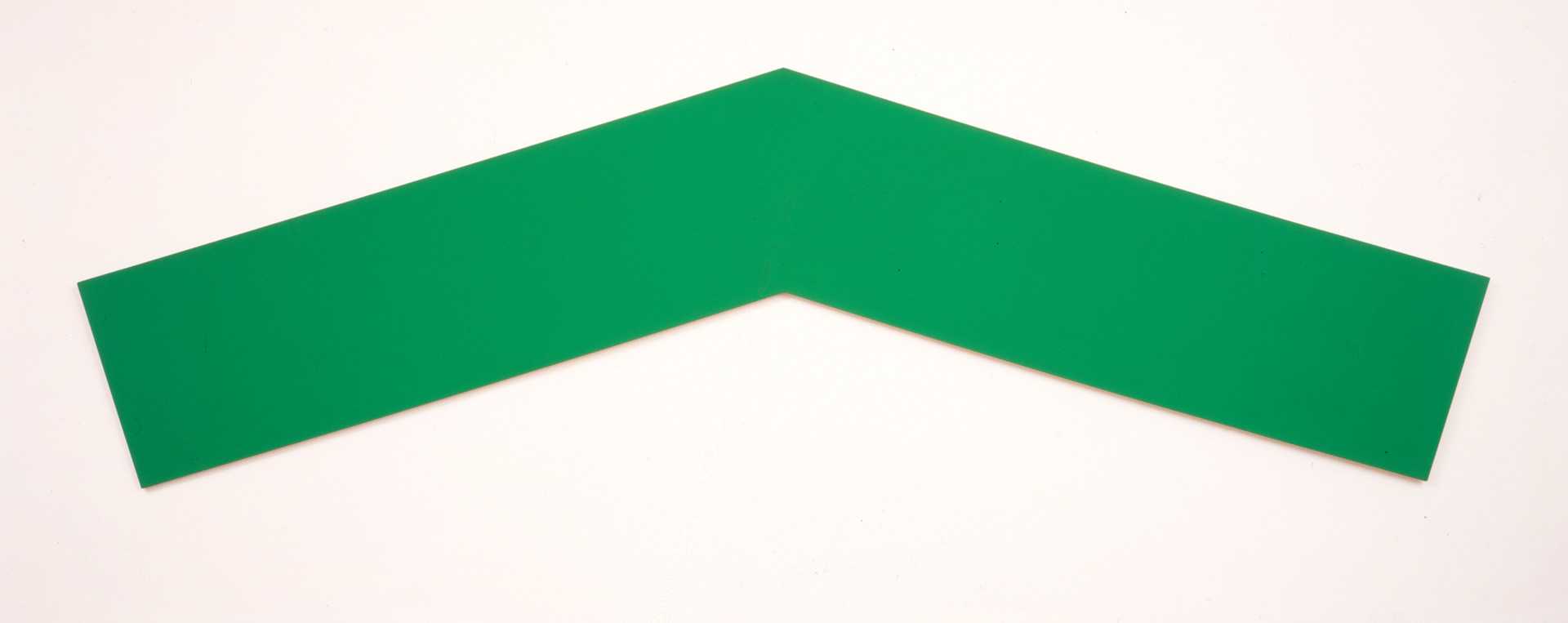
Green Angle
Have you ever seen a painting like this? Where the canvas shape, and the color are exactly as described by its title?
This is Green Angle by artist Ellsworth Kelly, who, perhaps surprisingly, takes inspiration from anywhere and everywhere but particularly from nature.
[SOUNDFX: sounds of birds singing, water flowing, gentle breeze overlapping]
From the birds and insects he used to watch as a child—to the way light hits, moves and glistens on water.
So, what does this painting mean? What are you supposed to make of the Green Angle ?
Well, Ellsworth just wants you to look and think. Be with the work. Meditate in front of it. And whatever response or feelings you have are the right ones.
Not sure where to start?
Spend time looking at the shape, the chevron-like angle, its peak, its slopes. Look at how it is protruding, floating from the wall.
Get drawn in by the single flat color, free from any brush strokes that might distract you from your thinking.
[SOUNDFX: deep inhale, then exhale]
There.
So, what did it make you think of?
When Ellsworth Kelly arrived in New York in 1954 after six years of working in Europe, he found an environment of artists receptive to his particular approach to abstraction. Moving into the now famous Coenties Slip complex in Lower Manhattan, Kelly encountered the art and fellowship of Agnes Martin, Jack Youngerman, James Rosenquist, and Robert Indiana. Initially Kelly’s approach and work were radically different from the abstract art being practiced in the city. Instead of abstracting from a figure or an image, Kelly was more interested in the experience of abstractions found in everyday life and nature. Abstraction was less something to be achieved than re-created.
As many critics have observed, Kelly’s work can be viewed in terms of what it is not. Unlike the painting of the abstraction expressionist and color field artists at the time, Kelly had no desire to make works involving expression, conceptual organization, depiction, or narrative. He was willing to drop traditional painting’s insistence on the square or rectangular frame to pursue departures of vision and experience. For this reason, Kelly is seen as a forerunner to artists such as Dan Flavin or Richard Serra, who focus on the experiential act of viewing art rather than the transmission of conceptual information.
An exceptional example of Kelly’s method is Green Angle, 1970. Only the second single-panel work completed by Kelly, Green Angle is radically simple in format. Though the integrity of the single panel is retained, the stretching and breaking of the traditional canvas rectangle calls for a different orientation between the viewer and the artwork. Instead of seeking narrative or harmony of composition in a self-contained image, the viewers find themselves immersed in a green field, which visually acts as a figure on the ground of the gallery wall. The architecture of the gallery is brought into play, and the real space that the viewers inhabit becomes the full experiential zone of the painting based on perception and instinct.